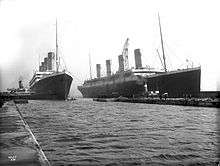William Arrol



Sir William Arrol (13 February 1839 – 20 February 1913) was a Scottish civil engineer, bridge builder, and Liberal Unionist Party politician.
The son of a spinner, he was born in Houston, Renfrewshire, and started work in a cotton mill at only 9 years of age. He started training as a blacksmith by age 13, and went on to learn mechanics and hydraulics at night school. In 1863 he joined a company of bridge manufacturers in Glasgow, but by 1872 he had established his own business, the Dalmarnock Iron Works, in the east end of the city. In the late 1870s he went on to found Sir William Arrol & Co., a leading international civil engineering business.
Tay Bridge

In 1878, he secured the contract for the Caledonian Railway Bridge over the Clyde, and in 1882 he was awarded the reconstruction contract for the Tay Rail Bridge, which had collapsed in 1879. His company went on to construct the Forth Bridge which was completed in 1890. At the time, the Tay and Forth bridges were the largest of their type in the world. They were notable not just for their size but also the use of steel in the Forth Bridge, and the riveting method developed by Arrol to attach the girders to one another.
Forth Bridge

The bridge is, even today, regarded as an engineering marvel. It is 2.5 km (1.6 mi) in length, and the double track is elevated 46 m (approx. 150 ft) above high tide. It consists of two main spans of 1,710 ft (520 m), two side spans of 675 ft, 15 approach spans of 168 ft (51 m), and five of 25 ft (7.6 m). Each main span comprises two 680 ft (210 m) cantilever arms supporting a central 350 ft (110 m) span girder bridge. The three great four-tower cantilever structures are 340 ft (104 m) tall, each 70 ft (21 m) diameter foot resting on a separate foundation. The southern group of foundations had to be constructed as caissons under compressed air, to a depth of 90 ft (27 m). At its peak, approximately 4,600 workers were employed in its construction. Initially, it was recorded that 57 lives were lost; however, after extensive research by local historians, the figure has been revised upwards to 98.
Both bridges are known for their high safety factors, a natural result of the under-design of the first Tay bridge by Thomas Bouch, and both bridges have recently (2008) been renovated.
Tower Bridge

HMS Northumberland (F238)
Other notable bridges followed, including: Tower Bridge in London, completed in 1894. Construction started in 1886 and took eight years with five major contractors Sir John Jackson (foundations), Baron Armstrong (hydraulics), William Webster, Sir H.H. Bartlett, and Sir William Arrol & Co.. It employed 432 construction workers. E W Crutwell was the resident engineer for the construction. Two massive piers, containing over 70,000 tons of concrete, were sunk into the river bed to support the construction. Over 11,000 tons of steel provided the framework for the towers and walkways. This was then clad in Cornish granite and Portland stone, both to protect the underlying steelwork and to give the bridge a pleasing appearance.
Other bridges
Arrol also built the Nile Bridge in Egypt, the Hawkesbury Bridge in Australia and the Keadby Bridge in Lincolnshire.
The extant but at-risk Warrington Transporter Bridge is also an Arrol construction.
Arrol Gantry

His company, Sir William Arrol & Co., was contracted by Harland and Wolff Shipyard, Belfast, to construct a large gantry (known as the Arrol Gantry) for the construction of three new super-liners, one of which was called the RMS Titanic. Like the ships themselves, the gantry crane was one of the largest built at the time, comparing with transporter bridges in length, height and capability.
Career
Arrol was knighted in 1890, and elected as the Liberal Unionist Member of Parliament (MP) for South Ayrshire at the 1895 general election, serving the constituency until 1906. He served as President of The Institution of Engineers and Shipbuilders in Scotland from 1895–1897. He spent the latter years of his life on his estate at Seafield, near Ayr, where he died on 20 February 1913. He is buried in Woodside Cemetery, Paisley, on the north side of the main-east west path on the crest of the hill.
His company, Sir William Arrol & Co., continued in business after his death until 1969 when it was acquired by Clarke Chapman.
In 2013 he was one of four inductees to the Scottish Engineering Hall of Fame.[1]
References
- Peter R. Lewis, Beautiful Railway Bridge of the Silvery Tay: Reinvestigating the Tay Bridge Disaster of 1879, Tempus, 2004, ISBN 0-7524-3160-9.
- Charles McKean Battle for the North: The Tay and Forth bridges and the 19th century railway wars Granta, 2006, ISBN 1-86207-852-1
- John Rapley, Thomas Bouch : the builder of the Tay Bridge, Stroud : Tempus, 2006, ISBN 0-7524-3695-3
- PR Lewis, Disaster on the Dee: Robert Stephenson's Nemesis of 1847, Tempus Publishing (2007) ISBN 978-0-7524-4266-2
External links
- Sir William Arrol: History and legacy of the pioneering Scottish Engineer.
- Hansard 1803–2005: contributions in Parliament by William Arrol
- Friends of Seafield House, Seafield House, Ayr, the former home of Sir William Arrol.
- NZ Craneships Hikitia and Rapaki Steam floating-crane, rated lift 80 tons, built 1926 by Sir Wm Arrol & Co.
- Climbing the Greenock Titan crane
- William Arrol on The Gazeteer for Scotland
- Sir William Arrol information at Structurae
- "Crane becomes visitor attraction". BBC News. 27 July 2007. Retrieved 7 August 2008.
- Titan crane at former John Brown yard Clydebank recognised as heritage site by 4 Engineering bodies
- NZR Cranes Arrol gantry
| Parliament of the United Kingdom | ||
|---|---|---|
| Preceded by Eugene Wason |
Member of Parliament for South Ayrshire 1895 – 1906 |
Succeeded by Sir William Phipson Beale |